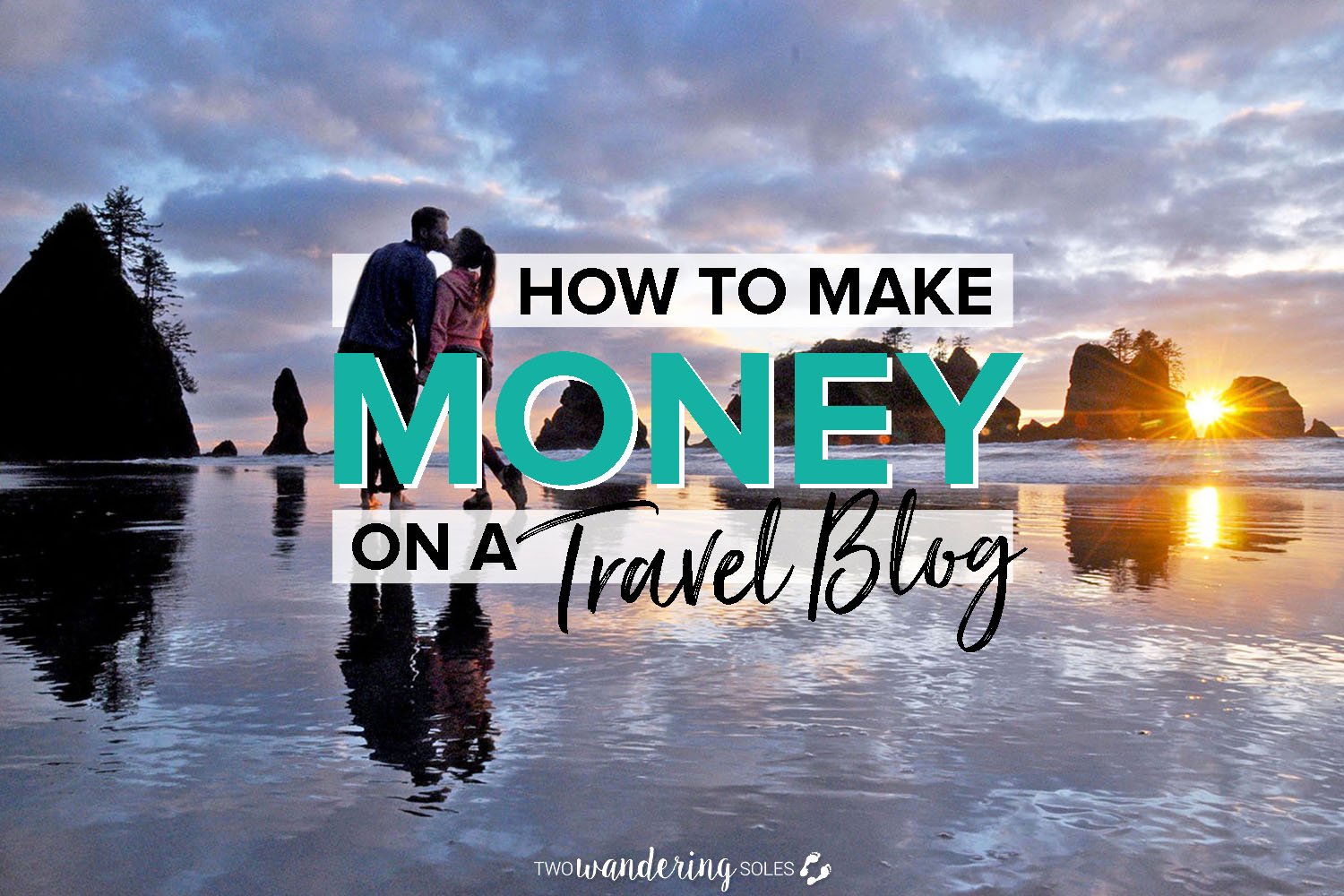
If you have dreams of getting paid to travel the world, you’ve probably already considered travel blogging. But you might also be wondering exactly how much money travel bloggers earn…
Simply put, you can make a LOT of money blogging.
Technically, the limits to your earnings as a blogger are endless. There are bloggers out there consistently earning millions of dollars. But they are the exception. Many blogs never earn a single penny.
I’m going to be 100% honest with you: Blogging is NOT a get-rich-quick scheme. If you’re looking to make money fast and create a passive income that you don’t have to touch, blogging is not for you.
Let me repeat: You should NOT travel blog if you want to make money fast.
Trust me, there are many other ways to earn money while you travel. Or sit in your pajamas watching Friends reruns (been there!).
However, if you are serious about blogging and are driven to earn money, you can be mega-successful. But before you pop champagne and toast to your new boujee lifestyle, you’ve gotta come up with a plan.
Our Personal Story with Monetizing our Blog
Making money as a blogger is not as straightforward as you might think. We recently shared our very first income report, and while we make a living on our blog now, it took us a while to get there. Okay, and by “a while” I mean FOREVER. We missed out on a ton of money because we made some big blogging mistakes, the biggest of which was not having a solid monetization strategy.
We didn’t really start monetizing our blog until about 2.5 years in. And even then, we weren’t doing it well. It stings knowing just how much money we left on the table. And I don’t even want to think of what we would be making now had we started earlier.
It’s not that we didn’t want to make money (I mean, who doesn’t want to make money?!)… We just didn’t understand how to do it successfully.
And quite truthfully, we didn’t know how much potential our blog had to earn money. When we started to monetize, we were getting a few hundred dollars each month that we were able to put toward student loans or fun stuff, and that felt pretty good. But with the traffic we were getting to our site (not to mention the hours of work we were pouring into it), we should have been earning thousands.
Whether you’re curious how blogger make a living or you’ve been blogging for years and want to turn it into a full-time income, in this article we’re going to divulge exactly how bloggers earn money. We’ll also talk a bit about what you need in order to star using these monetization methods.
But let’s start with the basics:
How do blogs make money?
Bloggers earn a “pie” of money each month, and there are many different slices:
These are the most popular ways bloggers earn money:
-
Affiliate Marketing: When a blogger recommends a product or service, they earn a commission when someone makes a purchase through their link.
-
Advertising: Banner or sidebar ads that earn money each time someone views them.
-
Sponsored Content: A brand pays a blogger to create content that promotes their product on the blogger’s platform. This can be in the form of a blog post, social media, videos, email campaigns, etc.
-
Commissioned Content: A blogger creates content for another source (writing, photography, video, etc.).
-
Brand Ambassadorship: Similar to Sponsored Content but more of a long-term partnership between the blogger and the brand. These campaigns can last months or even years, with a blogger promoting a product or service using a combination of blog posts, social media, videos, email campaigns, giveaways, or even in-person events.
-
Selling a Product: Selling a physical or digital product, like an e-book, a course, photos, or physical travel gear.
Other Ways Travel Bloggers Earn Money:
Public Speaking, Consulting, Leading Group Trips… the list goes on. Once you have a successful blog, many opportunities will present themselves. But most of these additional income streams come only after years of blogging and successfully monetizing using the strategies above.
It’s going to be hard to organize and sell out a group trip when you are just starting out. But after years of cultivating an audience, we know bloggers who have had big success doing this. Same with public speaking. You’re not going to get a paid speaking gig without experience.
Monetization Methods & Tips for Getting Started
Every blogger’s income looks a bit different. Each pie has a different “recipe”, if you will.
For example, the biggest slices of Two Wandering Soles’ metaphorical “pie” are affiliate marketing and advertising.
We know some bloggers who make the majority of their money writing sponsored content. And others who earn a killing by selling their own products.
What works for one person doesn’t necessarily work for the next. You need to tailor your monetization strategy to fit your strengths and work around your weaknesses. And always, always stay true to yourself and aim to be authentic in how you monetize.
Alright, let’s delve in and eat some pie! (Or something like that…)
Yes, it is possible to monetize your blog authentically, without selling your soul!
We are going over each monetization method in detail so you fully understand what it looks like and what you need in order to get started.
1. Affiliate Marketing
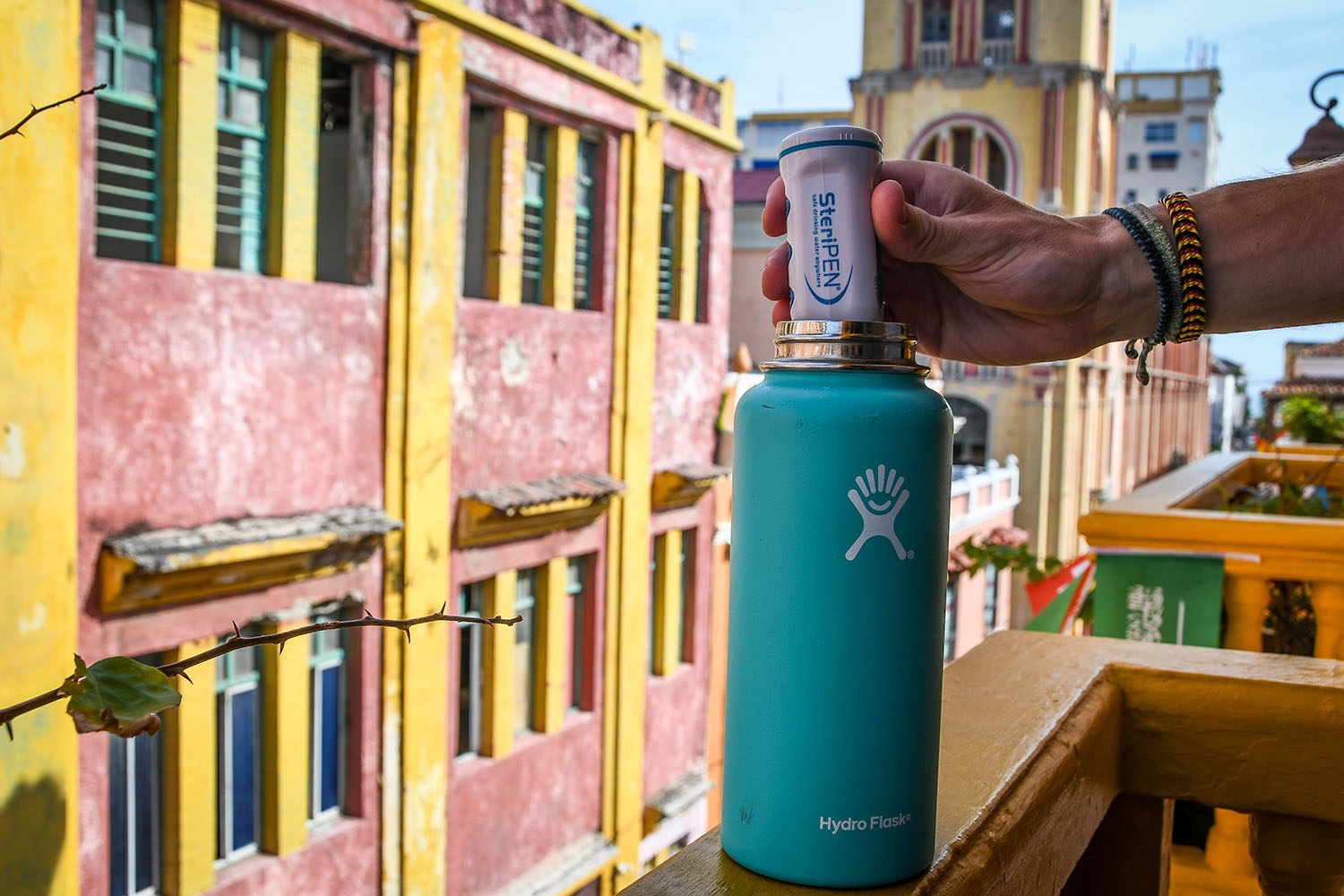
Affiliate Marketing is where you recommend a product or service and in return for your recommendation you receive a commission of the sale.
When executed correctly, affiliate marketing is a good thing for everyone involved.
Here’s an example of what I mean: We’ve been working with one affiliate for 3 years, and in that time we have sent more than $1.3 million dollars in business their way. And that number is climbing each month. (True story)
Here’s how everyone wins:
-
Business: They get lots of business from us recommending them ($1.3 million dollars and counting!): Win for them.
-
Blogger: We make commission on those sales: Win for us.
-
Audience: Our readers learn about a quality product/service that actually saves them money in the long run: Win for everyone!
What does Affiliate Marketing look like on a blog?
Let’s use Amazon as an example, as it is one of the simplest forms of affiliate marketing.
Say you’re browsing your favorite travel blog (aka Two Wandering Soles!) and you see that we recommend packing a Steripen (literally one of our favorite devices). You click on the link and are brought to Amazon. After looking at the awesome reviews, you decide you could use this portable water sterilizer for your next trip, and you click “purchase”.
You pay the normal price, but Amazon will pay us a small commission for recommending the product. Your computer uses “cookies” and tracks which site sent you to Amazon, so even if you buy the Steripen 10 hours after reading about it, we will still get commission (Amazon has 24-hour cookies, but other programs can be up to 30- or even 90-days). The average consumer will do this entire process without any clue that the blogger who recommended the product gets a small payment.
If you think about it, affiliate marketing is everywhere around us.
For example, your gym might have a program where if you recommend it to a friend and they join, you get $50 off your next month. That’s a type of affiliate marketing. Or you use your friend’s link to get $40 off your stay at an Airbnb, and they get money off their next stay. Another example of affiliate marketing.
Both of these examples have one thing in common: Trust.
For Affiliate Marketing to work properly, people need to trust the person recommending the product. And we take this super seriously. We never recommend products that we wouldn’t personally use.
What do you need to start with affiliate marketing?
-
Website Traffic
-
Trust
The wonderful thing about affiliate marketing is that you can start this strategy from day one. Most affiliate programs will accept anyone with a decent website, so you don’t need to have a popular site to get started. However, the more traffic you have, the more money you will earn.
And for affiliate marketing to work well, your readers need to TRUST you.
Tips for Affiliate Marketing
Take inventory of what you actually love to use on your travels. Think products, websites, and tour companies.
-
Do you have a favorite pair of shoes you always travel with?
-
Do you love your backpack so much you want to tell others about it?
-
Where do you usually book your trips online?
-
What’s the one thing you can’t travel without?
Most likely, there is an affiliate program for whatever you answered above.
Tip #1: The key to affiliate marketing is to be honest. The best type of affiliate marketing is when you promote something you actually use and love because it won’t just sound like a sales pitch. Your audience is going to see that you are being genuine and will trust you.
Promoting one product you really love is going to convert much better than promoting 100 products you barely know.
Tip #2: Start by putting Amazon and hotel affiliates throughout your site, because they add up over time. But don’t rely on them to be a big chunk of your monthly pie. We typically earn a few hundred dollars each month from each, but we have found other types of affiliates to be much more lucrative.
Tip #3: Since you typically get a small commission off of the sale, try to focus on “big ticket” affiliates since you’ll get a larger payout.
Tip #4: Know your audience. Don’t go off promoting luxury cruises if your blog is about budget travel. It won’t convert because it doesn’t apply to your readers.
Tip #5: Be sure to keep track of all your affiliates. If they are not automatic payments, and be sure to follow up with them at the end of each pay period. We keep a detailed spreadsheet so we know we are getting the correct payout.
Tip #6: Also, try to set up payment methods that don’t charge a fee. PayPal (personal account) and Google Wallet are great, as is a direct bank transfer. We recently noticed that we were getting charged a large fee on one of our affiliate commissions, which turned out to be about $80 we were losing each month. We contacted the company and had them change the payment method so we didn’t throw out that extra cash.
Want more info on Affiliate Marketing? Check out our Income Reports in the Affiliates section to see what are some of our top affiliate programs we use.
2. Advertising
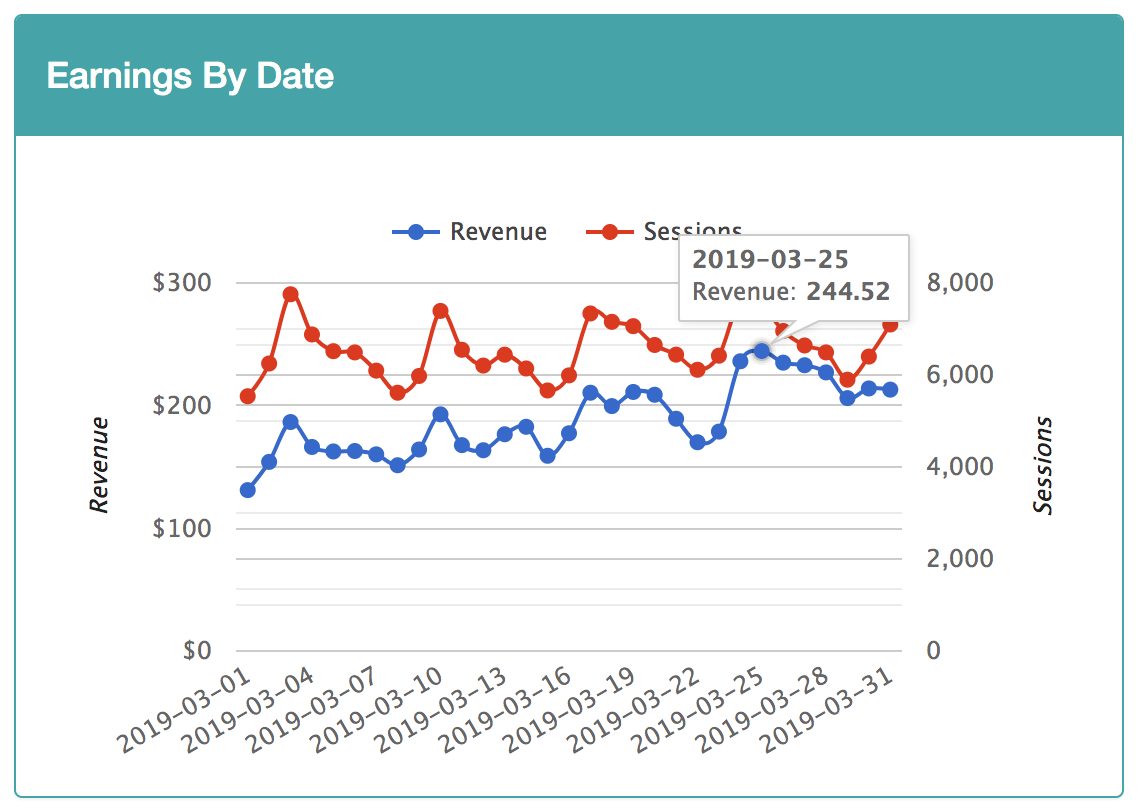
Ads on websites can earn their owners a big part of their income if they have enough traffic. The graph above shows our earnings in one month from Mediavine, during which we made $244.52 on advertisements on our highest earning day.
What does Advertising look like on a blog?
By now, you probably know what advertising looks like on a website. They are the banner and sidebar images promoting links to things the reader is interested in.
What do you need to start with Advertising?
-
Website traffic
There are a few different advertising routes you can take, but typically you can only work with one advertising provider at a time.
When we started our blog, we had Google Adsense and it was bringing us a measly hundred bucks or so each month. And we didn’t realize there was more out there… Oh, how we are kicking ourselves now!
One of the biggest blogging mistakes was not getting on Mediavine sooner, because now it is one of our biggest pieces of pie, and it is delicious.
Before I go on to explain much more, know that you will need to apply to Mediavine before you start earning money. In order to apply for Mediavine, you must have:
-
At least 25,000 monthly sessions (you can find your sessions count in Google Analytics)
-
Quality site that’s in good standing with Google.
If you don’t fit these requirements right now, work your butt off to get there. Because when you do, you’ll see some sweet, sweet money each month.
And if you do fit these requirements, get over to their site now and apply!
Mediavine is a third-party that allows companies to bid on ad space on your site. And the wonderful thing is the lovely folks at Mediavine take care of everything for you, from ad placement to optimization. And they are a pleasure to work with. I’m not earning money by telling you this – we have just literally had such a great experience with them.
There is also a Mediavine Facebook group that is pretty great because you have a whole network of people to ask advice and talk about best practices.
AdThrive is very similar to Mediavine, and it works great for some sites (especially food blogs). You do need to have higher traffic to apply (100,000 monthly pageviews minimum), so most people begin with Mediavine. And even when they get to the traffic to apply to AdThrive, many people don’t want to leave because they are very happy with Mediavine. (That’s us at the moment!)
Tips for Advertising
Try to find the sweet spot between revenue and having a good user experience. There is a fine line between “I don’t mind these ads” and “Holy sh*t, that’s a lot of ads”, and everyone has an opinion on it. Find out what feels comfortable for you and your brand.
Takeaway:
If you fit the requirements to apply to Mediavine (and don’t mind having ads on your site), do so now! And if not, set that as a goal and apply as soon as you can. In the meantime, create great content and work on SEO to get traffic. Traffic is currency in advertising.
3. Sponsored Content
For sponsored content, brands pay bloggers to create content that promotes their product. This can be in the form of a blog post, social media, videos, email campaigns, etc.
What does a Sponsored Content look like on a blog?
When a blogger is good, you won’t even notice what you’re reading is sponsored content. The reference to a product is placed in a well written article or social post that you, as the reader, will have no idea the blogger got paid to write it. But then there is the other end of the spectrum where it’s painfully obvious the blogger is getting paid and doesn’t care how the post looks.
Please aim to be the former. You will lose trust in your followers if you continue to spam them with links and products.
One way to tell if a social media post is sponsored is in the captions there is a hashtag of #ad or #sponsored. Not all influencers do this but they are “supposed to” disclose if they are being #paid to promote.
For blog articles, there will be a small disclaimer either at the top or bottom of the page stating something like, “Thanks to XYZ travel company for hosting us on this tour. As always, all opinions are our own.” That short disclaimer is the tell-tale sign that the blogger got the experience for free, or they were paid to write it.
What do you need to start with Sponsored Content?
-
Website traffic
-
Social Media following (and high engagement)
Typically influencers with a large reach will be approached by brands to create sponsored content. But it doesn’t hurt pitching to brands an idea of how you would like to work together.
Tips for Sponsored Articles
There are plenty of influencer marketing sites out there if you want to see which brands are looking for sponsored content. Here are a few of them:
-
GravityFed (Outdoor brands)
Most travel brands are interested in sponsored content being on a website or on Instagram.
Word of the wise: Be wary not to add too many sponsored articles or post to you feeds. Your audience takes time to grow and more importantly gain their trust. You don’t want to spam them with a bunch of products and services that they may or may not be interested. The money may seem nice, but your audience can lose interest very quickly if you blast too many products at them. Try to only promote 1-3 products per month.
Note on Influencers vs. Bloggers: Even though these jobs overlap, they aren’t the same. It’s kinda like those Venn diagrams we all made in grade school. Bloggers typically earn the majority of their income from traffic to their website.
An influencers’ strength is in their social media following, and they earn money based on the number of followers instead of website traffic. (Often, they earn money through brand partnerships or selling products, like Lightroom presets).
4. Commissioned Content

This is when you create content — an article, photography, or video — for a brand to use on their website or social channels for their marketing purposes.
If you find the right company, this could be a great way not only be paid to write something, but you could also get a backlink from a high authority site.
What does Commissioned Content look like?
Sometimes a brand will want to purchase the rights to content you have already created. For example, you have a sweet shot wearing their jacket, and they want to use it for marketing purposes. This can be an easy way to earn money on something that you’ve already created.
Other times, they may want you to create new content for them.
In both cases, your work will be featured on THEIR WEBSITE (or social channels), not yours. This is the biggest difference between commissioned content and sponsored content. The nice thing is you don’t necessarily have to work on promoting it to your audience.
However, you are not building your traffic or portfolio when working on commissioned content. You are working for someone else’s brand and getting paid for it. So it is important to not only focus on this monetization method if your goal is to grow your own brand.
What do you need to get commissioned Content?
-
Portfolio of writing, photography, videography
-
Often times, you might have a previous relationship with the brand (already promoting it on your website and social channels)
Sometimes having a large audience helps a brand find you, however, the content won’t be shared with your following, so numbers don’t always matter when talking about commissioned content.
Tips for Commissioned Content
Be sure you have a contract set up so you and the brand are on the same terms for how they can use the content you create. If possible, ask for a backlink to your website, as this can give your site high authority “link juice”!
5. Brand Ambassadorship

Brand ambassadorships are similar to sponsored content, however, this is a long-term partnership rather than a one-time promotion.
What does a Brand Ambassador look like on a blog?
The blogger essentially becomes a marketing avenue for the brand and these relationships last anywhere from a few months to several years.
The brand and the blogger will sign a contract that determines exact deliverables, length of agreement, expectations of both parties, and payment terms.
Brands tend to want more social media content, but can request blog articles as well.
What do you need to start a Brand Ambassadorship?
-
Website traffic
-
Social Media following (and high engagement)
-
Often times, you might have a previous relationship with the brand (already promoting it on your website and social channels)
This typically takes a long time to develop a relationship with a brand. As a blogger you’ll need to invest a lot of time creating content for free over time in hopes of showing them your audience is a good fit. Find a contact at the company and reach out with your analytics and engagement numbers.
Brands may approach a blogger if they think their audience and reach is a good fit.
Tips for Brand Ambassadorship
Start by becoming an affiliate with a brand you love. Create high quality content and consistently shout them out (yes, for free in the beginning!). Keep track of your analytics, how many sales you have made, and comments/questions you get from readers about this product.
Now, approach the brand and say that you already promote their product/service, and you’d love to work with them in a larger capacity as a brand ambassador. Having a prior relationship with them can be incredibly beneficial.
6. Sell a Product
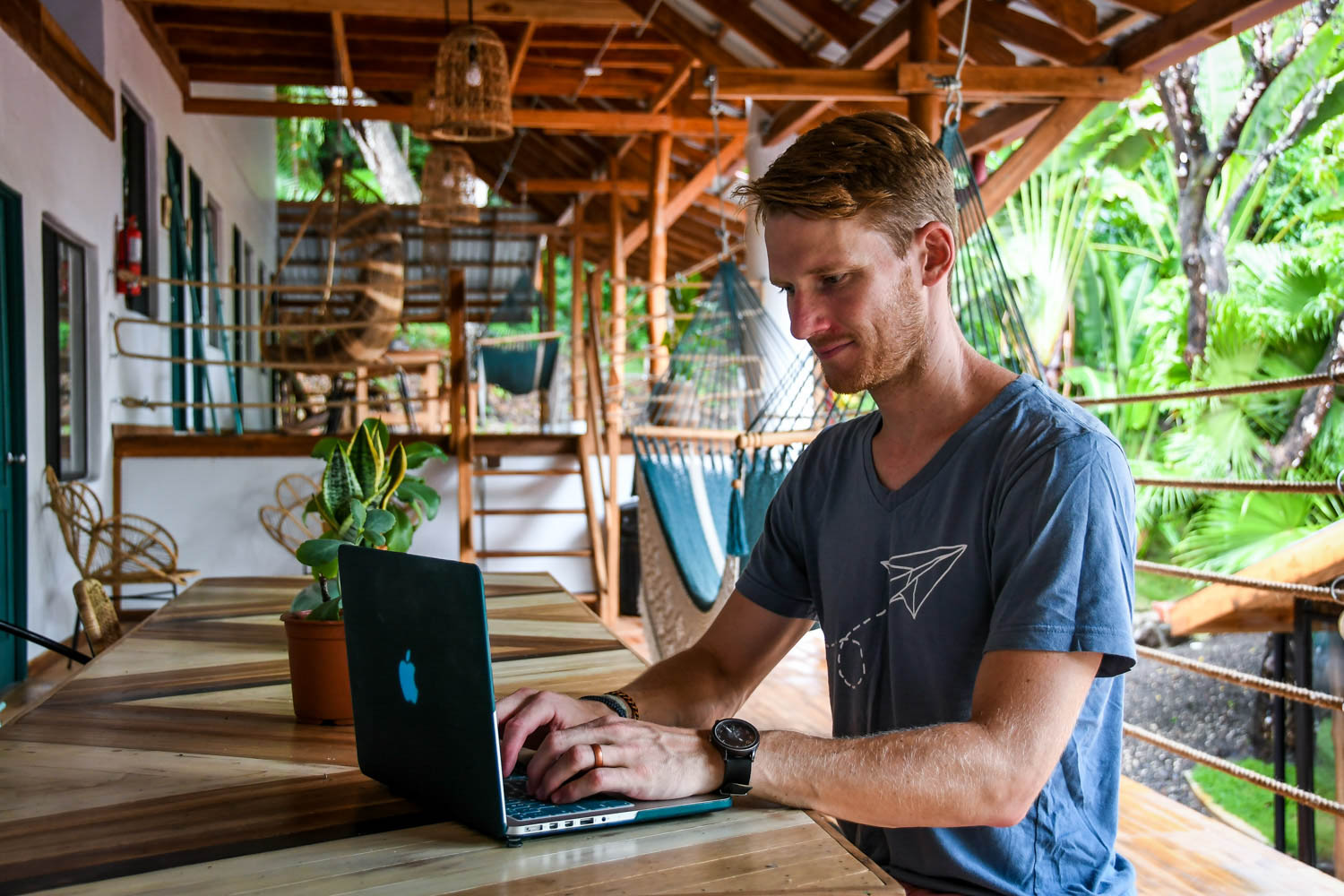
What does Selling a Product look like on a blog?
Travel bloggers can have an e-commerce section to their website where they sell their own products. These products can be anything from courses, to e-books, Lightroom presets, or even their own physical merchandise (like travel gear).
What do you need to start Selling a Product?
-
a product to sell (one that you have created)
-
Website traffic
-
Social Media following
-
Loyal Newsletter subscribers
-
Trust
Having a large social following, lots of website traffic, or a loyal audience of email subscribers is essential to getting sales on a product. You also need trust.
You’ll need to create a “sales pitch” page with videos, photos and testimonials, describing why your readers need this product and how it can solve a problem they have.
Tips for Selling a Product
Selling a product will most likely have the largest profit margin out of any other revenue stream on your blog. You own the product and will reap the benefits. However, this can be a very time-consuming task.
Before even creating material, make sure there is a market for your product. Survey or poll your audience on your platforms and only put a quality product or service out there. Anything that is sub-par will not stand the test of time.
Bonus Monetization Methods
There are two more methods we will discuss briefly because you can start them right away as a beginning blogger. We would caution you that neither of these methods are a very sustainable way to earn money as a blogger, and they should be used in conjunction with other methods (if used at all).
7. Ask for support
We’re not crazy about this idea for bloggers, but some people are comfortable with it and it works well for them.
I personally think this model works best for vloggers who produce daily or weekly videos. For instance, some vloggers have a Patreon account where their followers give them $1 for every video they create. This gives their audience a chance to “subscribe” and support their favorite YouTuber.
If they have a few hundred people as “Patreons” and create daily videos, you can see how this will add up to be a good chunk of change. Creating consistent videos is a ton of work, after all, and it is nice knowing that they will be compensated for their work.
We’ve even seen Instagram influencers that have an Amazon Wishlist that their audience can put money toward. That way they don’t need to pay for that new camera (or swimsuit).
8. Free Travel (exchanges, press trips, products, etc.)
Many travel bloggers include free gear and free trips in their income reports, and we feel this can be misleading. It is certainly a perk, and is very exciting when you’re starting out, but free stuff should not be a primary goal when strategizing how to earn money on your blog.
Free Products and Free Hotel Stays
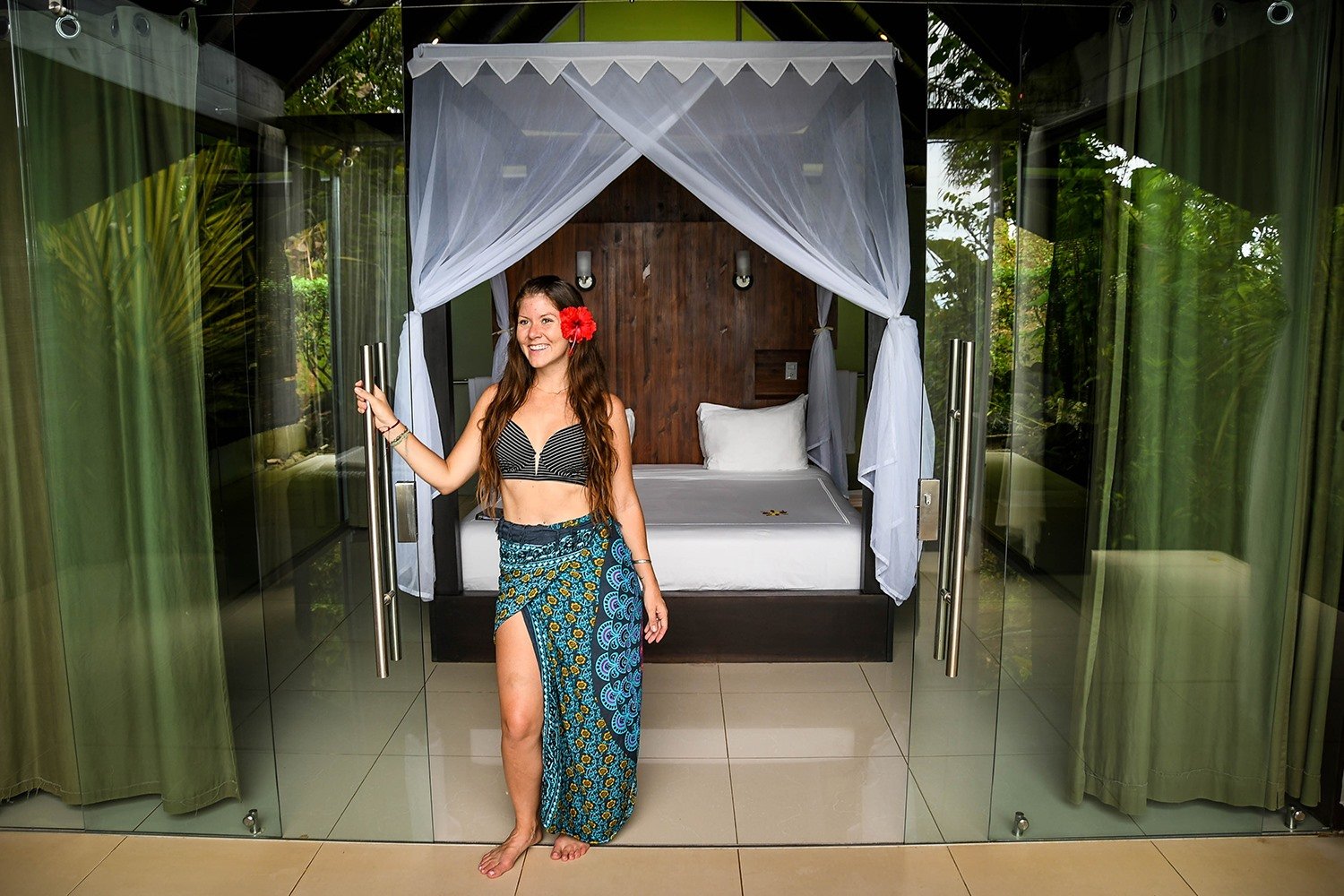
Shortly after starting a blog or Instagram, you’ll probably start getting contacted by companies offering you free products or services. For them, it’s a very low cost form of advertising. It doesn’t cost much for them to give you a product for free, and even if they get just a couple sales from your audience, it makes it worthwhile.
If it’s a product you genuinely think is cool, jump on it and celebrate getting free gear. And if you’re already planning on paying for a hotel in Bali, there’s not much reason to turn down a free stay (especially if you’re trying to build up your portfolio).
Free products and free travel sound really cool on the surface, but they don’t pay your bills. And often they come with a lot of work that can mean it’s not worthwhile. You really have to weigh out how much your time is worth.
Press and FAM Trips
And a step above free hotel stays is getting invited on a press or FAM trip (familiarization trip).
Another congrats! Free travel is a huge perk. Most of the time, you’ll be with other travel bloggers so it could be a great opportunity to network as well.
But we do feel like we owe you a word of caution. Before accepting anything for free, be sure you understand what is expected of you in return.
And the other thing is to really research the product or experience you will be receiving. Is it something you are genuinely interested in? We made the mistake of accepting a press trip that was just terrible. It turned out to be a really uncomfortable situation that definitely wasn’t worth a free flight or hotel stay.
Important Note about Free Stuff
Be clear with the company you’re partnering with that you will share your honest opinions and a disclaimer stating you received a product or experience for free (this is a standard guideline for blogging). Any reputable company will support this. If they don’t, walk away immediately.
Also, when you’re thinking of free products and travel in terms of income, think of it as opportunity cost.
Here’s what we mean:
-
I was planning on buying a Hydro Flask water bottle anyway, so getting it for free was an opportunity cost of $40 (cost of the bottle).
-
I was planning on budgeting $50 per night for my hotel in Bali. The hotel that offered me a free stay costs $200 per night. Since I stayed 2 nights, the opportunity cost was $100. (The price of what I would have paid for the $50 hotel.)
Free stuff is tempting, but don’t spend too much effort or time building this into your monetization strategy. Even the cutest travel sandals won’t pay your rent or phone bill.
Put your effort into the things that actually earn you cold, hard cash. Straight to your bank account. Then buy those cute travel sandals yourself, with no strings (ermmm… WORK!) attached.
Pro Tip: For any free product/hotel stay/tour you receive, check to see if they have an affiliate program attached to it. This is beneficial for both you AND the company involved.
Not only will you will earn a commission off of the sales, but it’s also in the best interest of the company because you’ll (hopefully) continue to promote that article and revamp that social post so it keeps earning both of you money. It also provides a way of tracking how many sales you have made (aka how successful the campaign was).
Determine your Monetization Strategy
Which monetization method(s) sound most interesting or authentic to you?
Don’t get overwhelmed by all of these methods. Perhaps in the future, you will utilize all of them to some extent. But when you’re first starting out, we would recommend only focusing on 2 before spreading yourself too thin.
Tip: #1 and #2 are the easiest methods to implement as a beginner blogger.
As you probably noticed, each of these strategies requires that you have Website Traffic for it to actually be successful (and earn you the big bucks!). And TRUST. Don’t underestimate the power of an audience who trusts you.
So as you are starting out as a blogger, your very first goals should be to grow your TRAFFIC, and cultivate TRUST.
How do you do that? We are breaking it all down for you in our FREE lessons from Blogging Bootcamp. If you really want these monetization methods to work for you, sign up today to receive the first 3 lessons of our Blogging Bootcamp, TOTALLY FREE. In these first 3 lessons we’ll touch on how to pinpoint your perfect audience, how to set blogging goals that’ll set you up for success, and how to create a customized monetization strategy that works for your blog. Sign up below…
Just know this: It is going to take time. As we’ve said over and over again, blogging is not a quick roadmap to lots of money. But if you have a plan in place, you will be on track to making money. (Potentially lots of it!)
How to Invest Money into your Blog
One of the wonderful things about blogging is that you can create your own business with a minimal investment.
The minimum you need to do is to spend around $200 to get your website up and running. And that’ll keep your domain up for a year! That is a TINY investment to start a business. Many traditional brick and mortar businesses need tens of thousands of dollars to get started. And to scale, businesses sometimes need investors with hundreds of thousands of dollars.
So that $200 is nothing, really.
You may have heard entrepreneurs say that they started becoming successful when they began Investing in their own business. Hiring a business coach, paying for professional branding, investing in advertising, hiring an assistant to take tasks off their plate and free up time… the thing is, it can be difficult to know where to invest your money.
We know that when you’re starting a blog, money can be tight.
Honestly, we did this whole building a blog thing on a super-tight-shoestring-budget. And that was a huge mistake. Had we invested money earlier on in software or help, we could have grown much more quickly.
Once you do start earning some money on your blog and have a bit to put back into your business (or you just want to get a jump start and invest right away!), here are some of the things we feel are the best value. They are all quite low cost and high reward.
Best Investments when you’re Starting out:
-
Tailwind: This program costs $10 per month, but it has absolutely skyrocketed our Pinterest game and sends significant traffic to our website each month! (currently 16,000 sessions!) And you’ll get $15 credit on us!
-
Hire a Virtual Assistant (VA): We hired a VA about 8 months ago to take on some admin tasks that were taking up lots of time. She does a fantastic job and has freed up time for us that we can spend doing the stuff that really brings in the money. There are VA job boards out there, and you can also find people on UpWork. Their hourly rate can sometimes reflect the quality of the work you’ll receive (and the level of difficulty they feel comfortable taking on).
-
Google Suite business email address: This is only $6 per month and will make you look super professional.
-
KeySearch: This program has seriously upped our game when it comes to keyword research, and helps us get organic search traffic. We have found it to be much easier to use and more accurate than the free programs out there. It costs $169 per year, but we snagged a Black Friday sale and got a nice discount (so keep that in mind this November!).
-
Business Cards: This isn’t necessarily going to drive traffic, but having a business card can make you look really professional when partnering with brands, and it can be a good way to spread the word about your website when you meet someone who is interested. Plus, they’re super cheap (starting around $8 for 100 cards)! We’ve used VistaPrint and have been happy with their options (we started out with the cheapest paper/design, but have also tried the more premium options, like using 100% recycled paper, and have been happy with both).
-
Blogging Course: If we were to do this whole thing over again, we would without a doubt enroll in a blogging course as soon as we could. We were scared off by the thought of investing a few hundred dollars in a course when we weren’t making any money on our blog. But if we had known what we know now a lot sooner, we would have started making money SO MUCH SOONER. And we would be exponentially further along than we are right now. If you have the money, investing it in a quality course is a great way to jumpstart your blogging career. Just make sure the course you enroll in is a high quality one.
-
If you’re still waiting a bit before investing in this step, we have good news: We are in the process of creating a huge Blogging Master Course, and it will walk you through everything you need to know to start really earning money on your website. Start by signing up for our Free 1-week Blogging Bootcamp, and on the last day, you can give us feedback for what you’d like to see in the big course we’re creating.
-
Interested in learning more about blogging?
Be sure to check out our Blogging Resources Page for the chance to enter our FREE mini-course on starting a blog, plus all sorts of other great info about blogging! Here are some of our favorite articles about blogging below…
-
How We Made $63,750 in 3 Months: Q3 Travel Blog Income Report
-
How to Start a Successful Travel Blog: Step-by-Step Guide (+ Free Course)
-
What Nobody Tells You About Being a Travel Blogger: No Bullshit Rundown
Save this article on Pinterest for later!




We want to hear from you!
What questions do you still have about making money on a blog? Do you understand better how to blogs make money? How does your blog make an income? Let us know your questions in the comments below and we’ll get back to you!


Fantastic & informative read – Keep up the great content guys. We will sure be following. 😉
Leoni & Kyle
Softback Travel
I am impressed with the amount of information you have provided in this article. Keep up the good work.
I am a HUGE FAN of your blog !
I am a solo female traveler and I would love to make some money with my blog I love writing it !! This page is very informative but I am unsure on how to reach out to advertising companies brands and affiliates? Do I just quote and tag there products and services or write to them directly? Also which platform do you recommend is the best to start writing your blog and how do you promote it?
I need some help for sure!
Thanks
Danielle
Danielle
Great questions, Danielle. If you like a brand and use their products, typically you can find an affiliate program link in the footer of their homepage. Depending on their requirements, you can apply for their program.
As for advertising, we would recommend working hard on your blog until you hit 25,000 monthly sessions and then apply for Mediavine Advertising network. We use them and they are the best!
Have you gone through our Free 7-day Blogging Bootcamp email series?! We’ll answer these questions and many more throughout the 7 days!
Thanks for stopping by and commenting on my blog. This post was very helpful. I am starting to start SOME monetization in the form of affiliate links, but haven’t delved into advertising yet (still working on building up traffic). Having a more solid plan would be very helpful.
SEO FINALLY clicked for me, and so I have been getting more traffic but I have so many old posts that I need to go back and optimize. So many tasks, so little time!
I ran into your site when I was planning my trip to Thailand and have been following you ever since! My good friend and I just launched a blog for live music nerds like ourselves and are looking to drive traffic to our site. Your blogging course is not only helpful for travel bloggers but have given us a lot of ideas as well. We’d love for you to take a look and thanks for all the great advice!
This blogging bootcamp is so helpful. My friend and I run a Southeast Asia trip planning company and our website has a blog which we use to give out tips and inspire travelers. We would love if y’all took a look!
This is very really unique helpful information. keep it up. Thank you so much!
This is great information. We started our blog site in 2015 and are trying to increase traffic so we can monetize our site using affiliates, etc. What are your suggestions for increasing our traffic?
Thank you,
John and Susan
Medellin, Colombia
http://latitudeadjustmentblog.com/